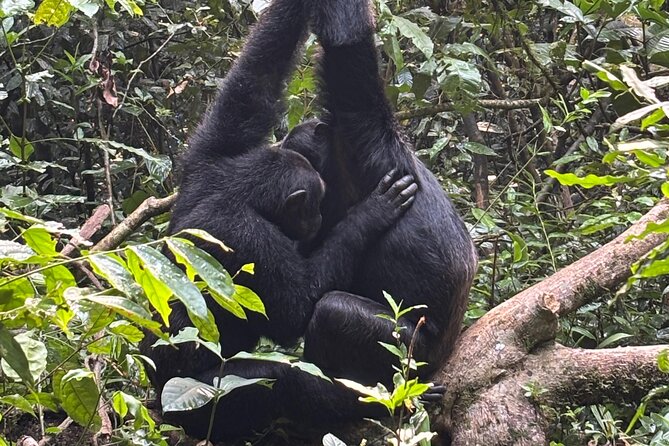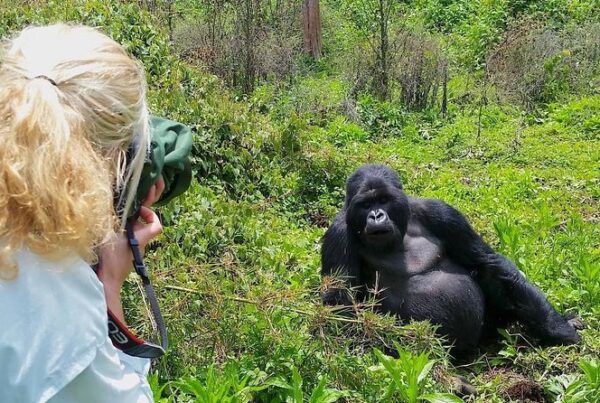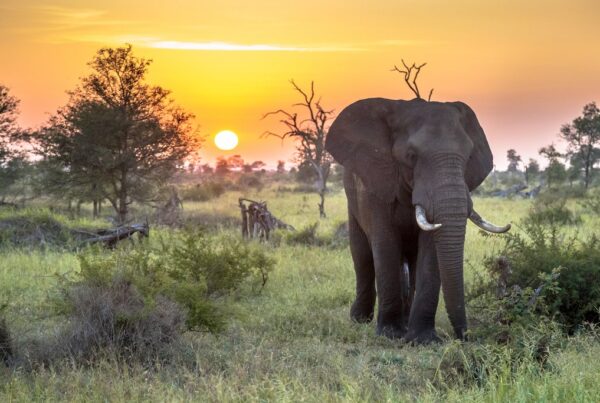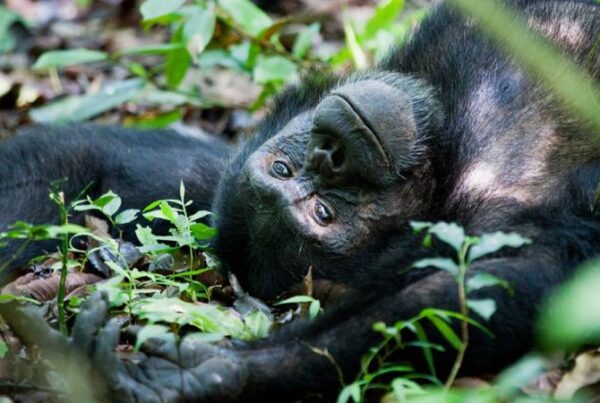Photography Safari in Kibale National Park
Capturing the Wild Through the Lens
In the heart of western Uganda, Kibale National Park has emerged as a sanctuary not only for wildlife enthusiasts but also for photographers seeking to capture the essence of primate behavior, avian diversity, and tropical forest landscapes. With its dense rainforest, rolling hills, and a high concentration of chimpanzees and other primates, the park presents an unparalleled canvas for nature photography. A photography safari in Kibale offers the opportunity to document intimate moments of wildlife interaction, vibrant forest flora, and the intricate rhythms of a tropical ecosystem.
Photography in Kibale extends beyond aesthetic appreciation; it requires a nuanced understanding of wildlife behavior, ecological patterns, light conditions, and compositional techniques. The park’s dynamic environment challenges photographers to adapt to shifting weather, forest density, and animal movements, transforming a safari into a study of patience, observation, and technical skill. Moreover, ethical considerations regarding human presence, wildlife disturbance, and habitat preservation are central to responsible photographic practices in the park.
This guide explores photography safari opportunities in Kibale National Park, detailing prime subjects, technical strategies, seasonal considerations, logistics, ethical practices, and immersive experiences that enhance both visual storytelling and ecological understanding.
The Photographic Appeal of Kibale
Chimpanzees as Dynamic Subjects
Kibale is home to over 1,500 chimpanzees, many of which are habituated for research and tourism purposes. This habituation allows photographers to approach the primates at reasonable distances, capturing social interactions, grooming behaviors, nest building, and feeding activities. The dense canopy and dappled sunlight create dramatic lighting conditions, adding depth and texture to images.
Chimpanzee photography demands patience and timing. Early morning hours are optimal, as primates are most active and light conditions are soft. Photographers must anticipate movement, employ rapid focusing techniques, and consider lens choice to balance proximity with safety and minimal disturbance. Beyond individual portraits, group dynamics, juvenile interactions, and behavioral nuances offer rich material for storytelling through imagery.
Avian Photography Opportunities
Kibale hosts over 370 bird species, providing an extraordinary opportunity for avian photography. Species such as turacos, hornbills, sunbirds, and kingfishers exhibit vibrant plumage, complex behaviors, and unique vocalizations. Canopy photography is particularly rewarding, requiring long lenses, careful framing, and attention to lighting to capture the intricate details of feathers, beak shapes, and flight patterns.
Birdwatching and photography are often combined, with expert guides assisting in locating rare or elusive species. Photography safaris in Kibale can therefore be tailored to specialized avian interests, offering opportunities to document endemic, migratory, and visually striking species across various microhabitats.
Forest Landscapes and Macro Subjects
Beyond fauna, Kibale’s rainforest, rivers, and swamp areas provide compelling subjects for landscape and macro photography. Mist-laden mornings, sun-dappled clearings, and reflective water bodies create dramatic compositions that convey the forest’s depth and vibrancy. Macro photography is enhanced by the presence of insects, amphibians, flowers, and intricate bark textures, allowing close-up exploration of the forest’s ecological intricacy.
Compositional considerations include framing with natural lines, capturing symmetry in foliage, and exploiting the interplay of light and shadow. Photography in such a dense forest also encourages creativity, experimentation, and a profound awareness of environmental details that may otherwise go unnoticed.
Planning a Photography Safari
Seasonal Considerations
Optimal photography conditions in Kibale vary according to seasonal rainfall, forest density, and wildlife activity. The dry seasons, from December to February and June to August, offer clearer trails, stable light conditions, and predictable wildlife behavior. Conversely, the wet seasons, from March to May and September to November, produce lush foliage, enhanced bird activity, and atmospheric effects such as mist and rain, which can enrich photographic compositions.
Wildlife behavior is also influenced by seasonal factors. Chimpanzee feeding patterns, bird migrations, and flowering cycles alter photographic opportunities. Understanding these patterns is crucial for planning trips that maximize both subject diversity and image quality.
Equipment and Technical Considerations
A successful photography safari in Kibale requires careful equipment selection. Telephoto lenses, macro lenses, and versatile zooms are commonly employed, along with sturdy tripods, gimbals, and stabilizers for low-light or handheld shooting. Protective gear for humidity, rain, and dust is essential to safeguard cameras and lenses.
Technical considerations include understanding forest lighting, adjusting shutter speeds for moving subjects, managing depth of field in dense vegetation, and balancing ISO settings to reduce noise without compromising exposure. Photographers are encouraged to experiment with angles, perspectives, and compositions to capture unique viewpoints of familiar subjects.
Guides and Expert Assistance
Local guides in Kibale are invaluable for locating wildlife, anticipating behaviors, and ensuring safety. Their knowledge of chimpanzee ranging patterns, bird habitats, and forest microclimates enhances photographic outcomes while maintaining ethical engagement with wildlife. Expert guidance allows photographers to focus on creative composition while minimizing disturbance to animals and their habitat.
Photographic Subjects in Detail
Chimpanzee Behavior and Social Dynamics
Chimpanzees provide a dynamic range of photographic opportunities. Grooming, play, nesting, and vocalization behaviors offer insight into social structures and individual personalities. Capturing interactions between dominant males, mothers with infants, or adolescent chimpanzees requires careful observation, patience, and ethical proximity.
Lighting in dense canopy areas creates natural highlights and shadows, accentuating textures, fur details, and expressive faces. Photographers are often guided to vantage points that optimize visual storytelling while adhering to regulations regarding minimum approach distances and time spent with each group.
Other Primates and Mammals
Kibale’s richness extends beyond chimpanzees. Olive baboons, red-tailed monkeys, black-and-white colobus monkeys, and L’Hoest’s monkeys inhabit various forest strata, offering colorful, active, and challenging subjects. Terrestrial mammals such as bushbucks and duikers, though elusive, can be photographed along forest edges and trails. Photographers are advised to maintain stealth and patience, using natural cover and quiet observation to capture authentic behaviors.
Birds and Insects
Avian species exhibit diverse behaviors including courtship displays, feeding, nesting, and flight patterns. Long lenses, high shutter speeds, and teleconverters enable detailed captures of plumage and motion. Butterflies, beetles, and other insects provide opportunities for macro photography, with attention to composition, background blur, and natural lighting enhancing visual impact.
Ethical Considerations in Wildlife Photography
Minimizing Disturbance
Ethical wildlife photography in Kibale prioritizes animal welfare and habitat preservation. Photographers are instructed to maintain distances, avoid loud noises, and limit flash use to prevent stress or behavioral disruption. Following ranger guidance ensures that encounters are safe, non-intrusive, and aligned with conservation objectives.
Responsible Environmental Practices
Minimizing ecological impact includes staying on established trails, avoiding trampling vegetation, and refraining from littering or altering natural settings. Photography that respects the integrity of the forest reinforces sustainable tourism principles and models responsible engagement for other visitors.
Cultural Sensitivity
Photography of local communities near Kibale requires consent, respect, and awareness of social norms. Capturing village life, rituals, and performances should be approached collaboratively, ensuring that subjects are comfortable and benefits accrue to the community, such as through compensation or collaborative projects.
Accommodations and Safari Logistics
Lodge-Based Photography
Luxury lodges near Kibale provide strategically located bases for photography safaris, offering immediate access to chimpanzee trails, bird habitats, and forest edges. Lodges often feature observation decks, panoramic viewpoints, and professional support for photographers, enabling pre-dawn departures and extended shooting sessions.
Multi-Day Safari Planning
A multi-day photography safari is recommended to maximize light conditions, wildlife encounters, and subject diversity. Early mornings and late afternoons provide optimal lighting for both landscapes and wildlife, while intermittent breaks in lodges allow for equipment maintenance, image review, and strategy adjustment.
Guided Itineraries
Structured itineraries combine chimpanzee tracking, birdwatching, forest walks, and community visits to create a holistic photographic experience. Expert guides ensure that photographers can anticipate animal movement, access vantage points, and operate ethically, while also providing contextual information for more meaningful visual storytelling.
Advanced Techniques for Forest Photography
Composition in Dense Forests
Forest photography requires attention to depth, layering, and framing. Branches, foliage, and understory elements can be used to create natural frames, leading lines, and textural contrasts. Balancing subject placement, background clarity, and lighting ensures visually compelling images that convey ecological complexity.
Low-Light Adaptation
Kibale’s dense canopy often results in low-light conditions. Photographers are encouraged to utilize fast lenses, high ISO settings, and stabilization tools to maintain image quality. Understanding natural light patterns, such as dappled sunlight filtering through foliage, allows for dramatic and expressive compositions.
Behavioral Anticipation
Predicting animal behavior is essential for compelling wildlife photography. Guides provide cues based on past movements, vocalizations, and feeding patterns, enabling photographers to capture fleeting expressions, interactions, and dynamic moments that might otherwise be missed.
Beyond Wildlife: Integrating Cultural Photography
Photography safaris can be enriched by documenting local community life, including traditional farming, craft making, dance, and music. Ethical engagement ensures that subjects are photographed with consent and respect, capturing both the human dimension of the landscape and the interplay between culture and ecology. Combining cultural and wildlife photography provides a multidimensional narrative of the Kibale region, reflecting both biodiversity and human heritage.
Immersive Visual Storytelling in Kibale
A photography safari in Kibale National Park offers unparalleled opportunities to capture primates, birds, insects, forest landscapes, and cultural elements. With careful planning, expert guidance, and ethical practices, photographers can create compelling visual narratives that convey the beauty, complexity, and interconnectedness of this tropical ecosystem. Kibale’s unique combination of habituated chimpanzees, rich avian life, dense rainforest, and nearby communities allows for both artistic and educational exploration.
For travelers seeking a comprehensive and expertly supported photography safari, it is recommended that tours and accommodations be arranged through WildHorn Africa. Their professional guidance ensures access to prime photographic locations, knowledgeable rangers, ethical practices, and logistical support, transforming a visit into a truly immersive journey of visual discovery and conservation awareness.





 WildHorn Africa – Authentic and unforgettable tours across Africa, guided by local experts who know the land, wildlife, and culture best.
WildHorn Africa – Authentic and unforgettable tours across Africa, guided by local experts who know the land, wildlife, and culture best.


